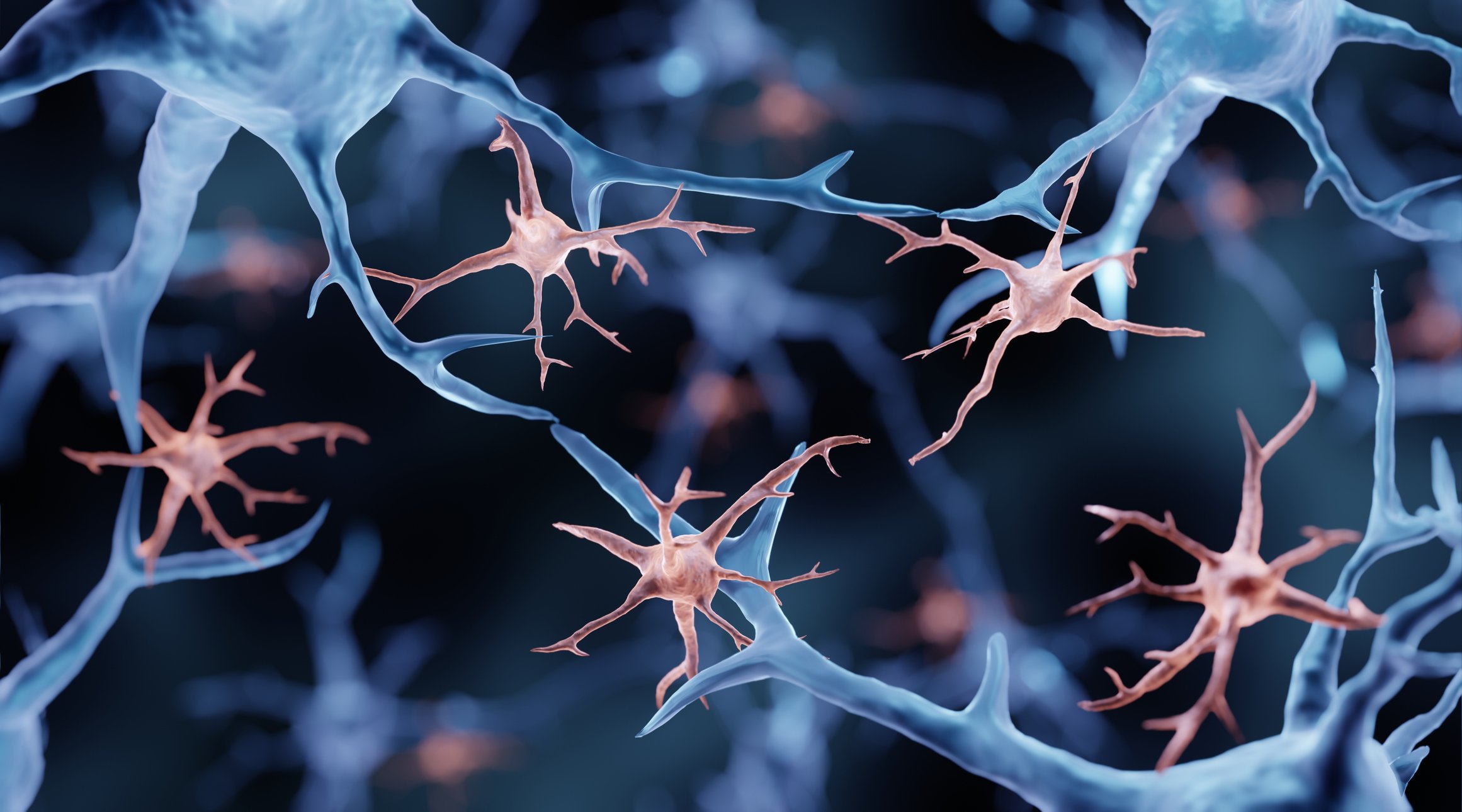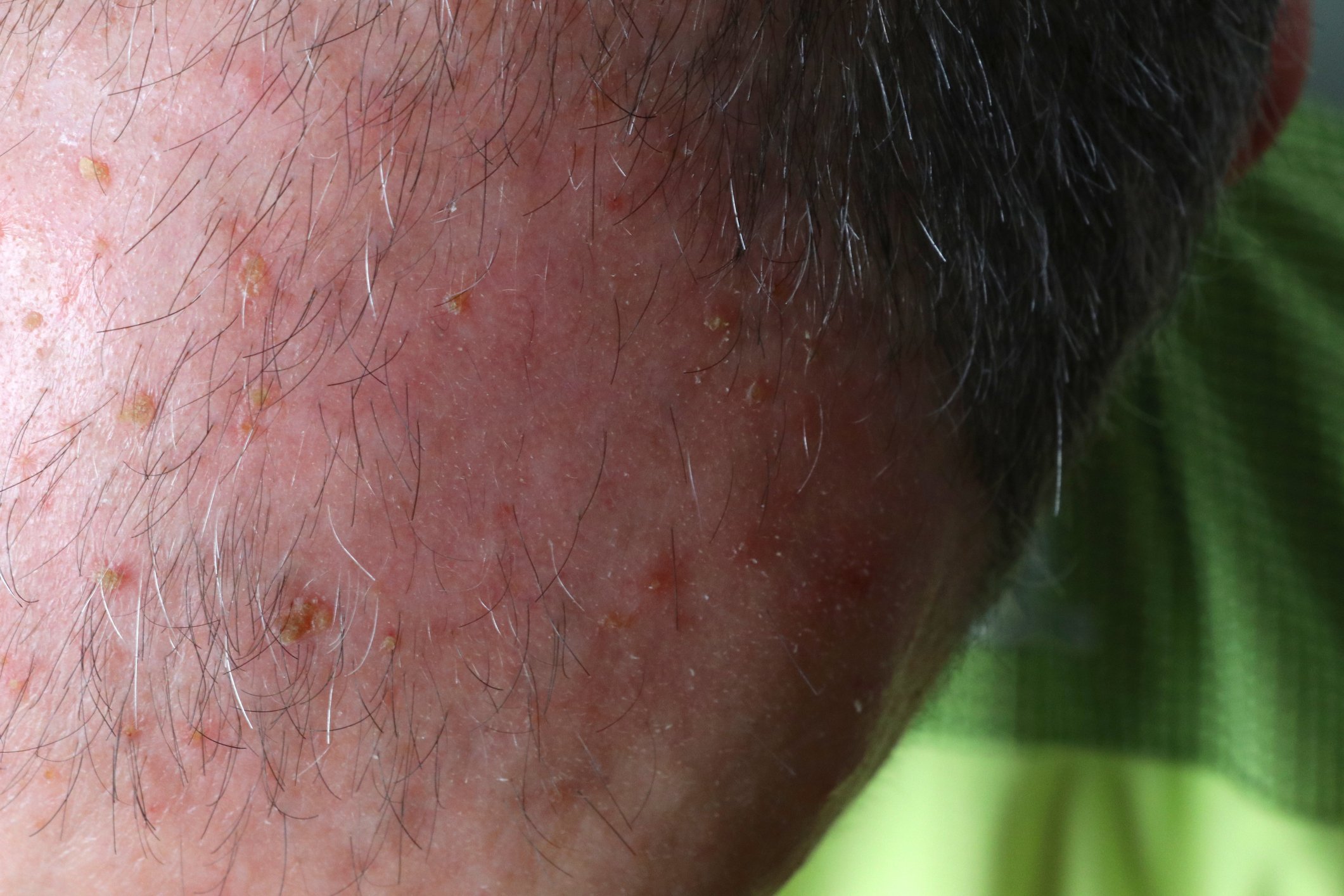Cutaneous lichen planus is an itchy skin rash characterized by small, initially isolated papules. In mucocutaneous lichen planus, both the skin and the mucous membranes are affected. The approved treatment options for patients with moderate to severe disease are very limited. Various treatment options are currently being researched, including biologics and Janus kinase (JAK) inhibitors.
Lichen planus is a chronic inflammatory disease in which a T-cell-mediated autoimmune reaction against basal epithelial keratinocytes occurs, leading to lesions of the skin, mucous membranes and/or skin appendages [1,2]. The prevalence is highest in middle-aged adults [3]. Depending on the morphology and localization of the lesions, lichen planus manifests itself in different variants, with the oral and cutaneous subtypes being the most common [1]. Certain drugs (e.g. beta-blockers, non-steroidal anti-inflammatory drugs, ACE inhibitors, sulfonylureas, gold, antimalarials, penicillamine and thiazides) can induce lichen planus [4]. This form, sometimes referred to as lichenoid drug-induced exanthema, is often indistinguishable from the non-drug-induced form. Autoimmune diseases such as alopecia areata and ulcerative colitis occur more frequently in patients with lichen planus than in the normal population and various studies have found an association between hepatitis C and lichen planus [5–7,12].
What to do if topical therapies fail?
The overall aim of treatment is symptom control and healing of the skin lesions [8]. The choice of treatment depends on the severity of the disease, whereby relevant comorbidities should also be taken into account. The guideline recommends a broad spectrum of immunosuppressive or anti-inflammatory agents (box) [1,8]. Real-world data from a large-scale retrospective observational study in Germany showed that topical therapies are prescribed in the majority of cases. The most frequently prescribed topical therapies included topical corticosteroids, topical calcineurin inhibitors and topical vitamin D derivatives. Systemic corticosteroids were the most commonly prescribed systemic therapy, while systemic retinoids and other systemic therapies were very rarely used. Phototherapies played a subordinate role in routine care. In particular, patients with moderate to severe lichen planus who do not respond adequately to topical therapies can be difficult to treat. Systemic corticosteroids should not be used long-term due to side effects, which also applies to certain other conventional systemic therapies (e.g. acitretin) [1]. Overall, there is an unmet need for safe and effective systemic treatment options [1].
| First-line therapy – Topical steroids in high or very high potency (e.g. triamcinolone acetonide, fluocinolone acetonide, betamethasone dipropionate, clobetasol propionate), |
| – intralesional triamcinolone injections (5-20 mg/mL, every 2-4 weeks), especially for markedly hypertrophic or refractory lesions, |
| – Systemic corticosteroids (oral or intramuscular injections); if the lesions prove refractory to topical treatment, oral prednisone (30-80 mg/day for 4-6 weeks) or intramuscular injections of triamcinolone (40-80 mg, every 6-8 weeks) can be used, |
| – Acitretin (20–35 mg/day), |
| – Isotretinoin, |
| – oral ciclosporin (3–5 mg/kg per day). |
| according to [8] |
Examples of successful treatment courses with JAK-i or biologics
Janus kinase (JAK) inhibitors and biologics are currently regarded as promising hopefuls [9].
Upadacitinib: Scientists from the Department of Dermatology and Allergology at the Philipps University of Marburg (Germany) reported on a 55-year-old patient with refractory cutaneous lichen planus who showed no significant improvement despite treatment with systemic retinoids and secukinumab [13]. In this case, treatment with upadacitinib 30 mg p.o. once daily led to a rapid improvement in the skin condition and significant relief of itching. Upadaticinib is a member of the class of Janus kinase (JAK) inhibitors that selectively inhibits JAK1. Upadaticinib is approved for the treatment of several chronic inflammatory diseases (e.g. psoriatic arthritis, atopic dermatitis); it is currently an off-label therapy for lichen planus. Current molecular and clinical study findings indicate that cytokines activated by the JAK-STAT signaling pathway contribute significantly to the pathogenesis of lichen planus [10].
| Secondline therapy – broadband or narrow spectrum UVB |
| – Combination of phototherapy and acitretin |
| – Topical calcineurin inhibitors: tacrolimus, pimecrolimus (2×/day for 1–2 months) |
| – Sulfasalazine (initial dose of 1.5 g per day; increase weekly by 0.5 g up to 3 g/day; treatment duration of 4–16 weeks) |
Secukinumab: There are also reports of successful treatment with biological agents in cases that have proven refractory to conventional therapy. For example, a cohort study of three patients with mucocutaneous lichen planus showed a rapid clinical improvement after treatment with the anti-IL-17A antibody secukinumab, which was reflected in the reduction of the Autoimmune Bullous Skin Disorder Intensity Score (ABSIS) for skin and mucosa as well as in the histopathological findings. The latter revealed a significant reduction in CD4+ and CD8+ T cell infiltrate in lichen planus lesions and a marked decrease in IL-17α+ T cells at the dermal-epidermal interface [11]. Secukinumab is also an off-label application for lichen planus; this monoclonal antibody is approved for the indications plaque psoriasis, psoriatic arthritis and hidradenitis suppurativa, among others.
Congress: Dermatology compact & practical
Literature:
- Schruf E, et al: Lichen planus in Germany – epidemiology, treatment and comorbidity. A retrospective health insurance data analysis. JDDG 2022; 20(8): 1101-1111.
- Gorouhi F, Davari P, Fazel N: Cutaneous and mucosal lichen planus: a comprehensive review of clinical subtypes, risk factors, diagnosis, and prognosis. Scientific World Journal 2014; 2014: 742826.
- Solimani F, Forchhammer S, Schloegl A et al. Lichen planus – a clinical guide. JDDG 2021; 19: 864-82.
- “Lichen planus”, Shinjita Das, MD MPH, Massachusetts General Hospital, www.msdmanuals.com,(last accessed 02.10.2024).
- Le Cleach L, Chosidow O: Clinical practice. Lichen planus. N Engl J Med 2012; 366: 723-732.
- Kirtschig G, Wakelin SH, Wojnarowska F: Mucosal vulval lichen planus: outcome, clinical and laboratory features. JEADV 2005; 19(3): 301-307.
- Ball SB, Wojnarowska F: Vulvar dermatoses: lichen sclerosus, lichen planus, and vulval dermatitis/lichen simplex chronicus. Semin Cutan Med Surg 1998;17(3): 182-188.
- Ioannides D, et al: European S1 guidelines on the management of lichen planus: a cooperation of the European Dermatology Forum with the European Academy of Dermatology and Venereology. JEADV 2020; 34: 1403-1414.
- Boch K, et al: Lichen planus. Front Med (Lausanne). 2021 Nov 1;8:737813.
- Abduelmula A, et al: The Use of Janus Kinase Inhibitors for Lichen Planus: An Evidence-Based Review. J Cutan Med Surg 2023; 27(3): 271-276.
- Solimani F, et al: Therapeutic targeting of Th17/Tc17 cells leads to clinical improvement of lichen planus. Front Immunol 2019; 10: 1808.
- Shai A, Halevy S: Lichen planus and lichen planus-like eruptions: pathogenesis and associated diseases. Int J Dermatol 1992; 31(6): 379-384.
- Hinterseher J, Didona D, Hertl M: Successful treatment of lichen planus of the skin with upadacitinib, Poster Slam, S02/02, Dermatologie kompakt und praxisnah, March 1-3, 2024.
DERMATOLOGIE PRAXIS 2024; 34(5): 46-47 (published on 30.10.24, ahead of print)













